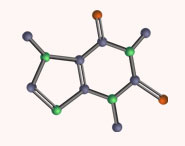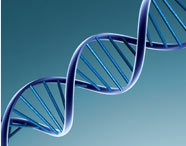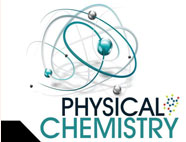


 علم الكيمياء
علم الكيمياء 
 الكيمياء التحليلية
الكيمياء التحليلية 
 الكيمياء الحياتية
الكيمياء الحياتية 
 الكيمياء العضوية
الكيمياء العضوية 
 الكيمياء الفيزيائية
الكيمياء الفيزيائية
 الكيمياء اللاعضوية
الكيمياء اللاعضوية 
 مواضيع اخرى في الكيمياء
مواضيع اخرى في الكيمياء
 الكيمياء الصناعية
الكيمياء الصناعية |
أقرأ أيضاً
التاريخ: 2025-01-14
التاريخ: 25-9-2020
التاريخ: 27-8-2019
التاريخ: 28-6-2019
|
We are now going to leave to one side most of the reactions you met in the last chapter—we will come back to them all again later in the book. In this chapter we are going to concentrate on just one of them—probably the simplest of all organic reactions—the addition of a nucleophile to a carbonyl group. The carbonyl group, as found in aldehydes, ketones, and many other compounds, is without doubt the most important functional group in organic chemistry, and that is another reason why we have chosen it as our fi rst topic for more detailed study. You met nucleophilic addition to a carbonyl group on pp. 115 and 121, where we showed you how cyanide reacts with aldehydes to give an alcohol. As a reminder, here is the reaction again, this time with a ketone, with its mechanism.
The reaction has two steps: nucleophilic addition of cyanide, followed by protonation of the anion. In fact, this is a general feature of all nucleophilic additions to carbonyl groups.
● Additions to carbonyl groups generally consist of two mechanistic steps:
• nucleophilic attack on the carbonyl group
• protonation of the anion that results.
The addition step is more important, and it forms a new C–C σ bond at the expense of the C=O π bond. The protonation step makes the overall reaction addition of HCN across the C=O π bond. Why does cyanide, in common with many other nucleophiles, attack the carbonyl group? And why does it attack the carbon atom of the carbonyl group? To answer these questions, we need to look in detail at the structure of carbonyl compounds in general and the orbitals of the C=O group in particular. The carbonyl double bond, like that found in alkenes (whose bonding we discussed in Chapter 4), consists of two parts: one σ bond and one π bond. The σ bond between the two sp2 hybridized atoms—carbon and oxygen—is formed from two sp2 orbitals. The other sp2 orbitals on carbon form the two σ bonds to the substituents while those on oxygen are fi lled by the two lone pairs. The sp2 hybridization means that the carbonyl group has to be planar, and the angle between the substituents is close to 120°. The diagram illustrates all this for the simplest carbonyl compound, formaldehyde (or methanal, CH2O). The π bond then results from over-lap of the remaining p orbitals—again, you can see this for formaldehyde in the diagram.
When we introduced the bonding in the carbonyl group in Chapter 4 we explained how polarization in the π bond means it is skewed towards oxygen, because oxygen is more electronegative than carbon. Conversely, the unfilled π* antibonding orbital is skewed in the opposite direction, with a larger coefficient at the carbon atom. This is quite hard to represent with the π bond represented as a single unit, as shown above, but becomes easier to visualize if instead we represent the π and π* orbitals using individual p orbitals on C and O. The diagrams in the margin show the π and π* orbitals represented in this way.
Because there are two types of bonding between C and O, the C=O double bond is rather shorter than a typical C–O single bond, and also over twice as strong—so why is it so reac tive? Polarization is the key. The polarized C=O bond gives the carbon atom some degree of positive charge, and this charge attracts negatively charged nucleophiles (like cyanide) and encourages reaction. The polarization of the antibonding π* orbital towards carbon is also important because, when the carbonyl group reacts with a nucleophile, electrons move from the HOMO of the nucleophile (an sp orbital in the case of cyanide) into the LUMO of the electrophile—in other words the π* orbital of the C=O bond. The greater coefficient of the π* orbital at carbon means a better HOMO–LUMO interaction, so this is where the nucleophile attacks. As our nucleophile—which we are representing here as ‘Nu−’—approaches the carbon atom, the electron pair in its HOMO starts to interact with the LUMO (antibonding π*) to form a new σ bond. Filling antibonding orbitals breaks bonds and, as the electrons enter the antibonding π* of the carbonyl group, the π bond is broken, leaving only the C–O σ bond intact. But electrons can’t just vanish, and those that were in the π bond move off on to the electronegative oxygen, which ends up with the negative charge that started on the nucleophile. You can see all this happening in the diagram below.
Notice how the trigonal, planar sp2 hybridized carbon atom of the carbonyl group changes to a tetrahedral, sp3 hybridized state in the product. For each class of nucleophile you meet in this chapter, we will show you the HOMO–LUMO interaction involved in the addition reaction. These interactions also show you how the orbitals of the starting materials change into the orbitals of the product as they combine. Most importantly here, the lone pair of the nucleophile combines with the π* of the carbonyl group to form a new σ bond in the product.



|
|
|
|
حقن الذهب في العين.. تقنية جديدة للحفاظ على البصر ؟!
|
|
|
|
|
|
|
علي بابا تطلق نماذج "Qwen" الجديدة في أحدث اختراق صيني لمجال الذكاء الاصطناعي مفتوح المصدر
|
|
|
|
|
|
|
ضمن برنامج تأهيل المنتسبين الجدد قسم الشؤون الدينية يقدم محاضرات فقهية وعقائدية لنحو 130 منتسبًا
|
|
|